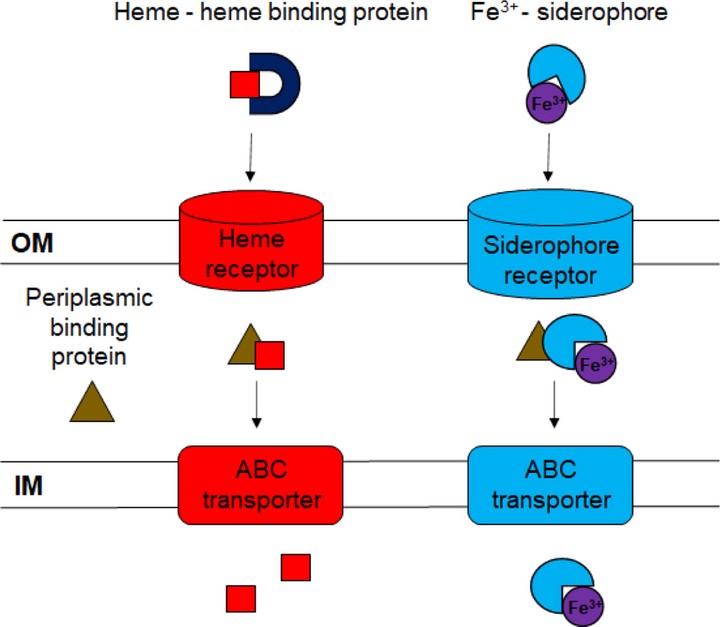
Abstract
Flavobacterium columnare, which causes columnaris disease, is one of the costliest pathogens in the freshwater fish-farming industry. The virulence mechanisms of F. columnare are not well understood and current methods to control columnaris outbreaks are inadequate. Iron is an essential nutrient needed for metabolic processes and is often required for bacterial virulence. F. columnare produces siderophores that bind ferric iron for transport into the cell. The genes needed for siderophore production have been identified, but other components involved in F. columnare iron uptake have not been studied in detail. We identified the genes encoding the predicted secreted heme-binding protein HmuY, the outer membrane iron receptors FhuA, FhuE, and FecA, and components of an ATP binding cassette (ABC) transporter predicted to transport ferric iron across the cytoplasmic membrane. Deletion mutants were constructed and examined for growth defects under iron-limited conditions and for virulence against zebrafish and rainbow trout. Mutants with deletions in genes encoding outer membrane receptors, and ABC transporter components exhibited growth defects under iron-limited conditions. Mutants lacking multiple outer membrane receptors, the ABC transporter, or HmuY retained virulence against zebrafish and rainbow trout mirroring that exhibited by the wild type. Some mutants predicted to be deficient in multiple steps of iron uptake exhibited decreased virulence. Survivors of exposure to such mutants were partially protected against later infection by wild-type F. columnare.
Conrad, R.A., Evenhuis, J.P., Lipscomb, R.S., Pérez-Pascual, D., Stevick, R.J., Birkett, C., Ghigo, J.M. & McBride, M.J. (2022). Flavobacterium columnare ferric iron uptake systems are required for virulence. Frontiers in Cellular and Infection Microbiology, p.1559. doi:10.3389/fcimb.2022.1029833.